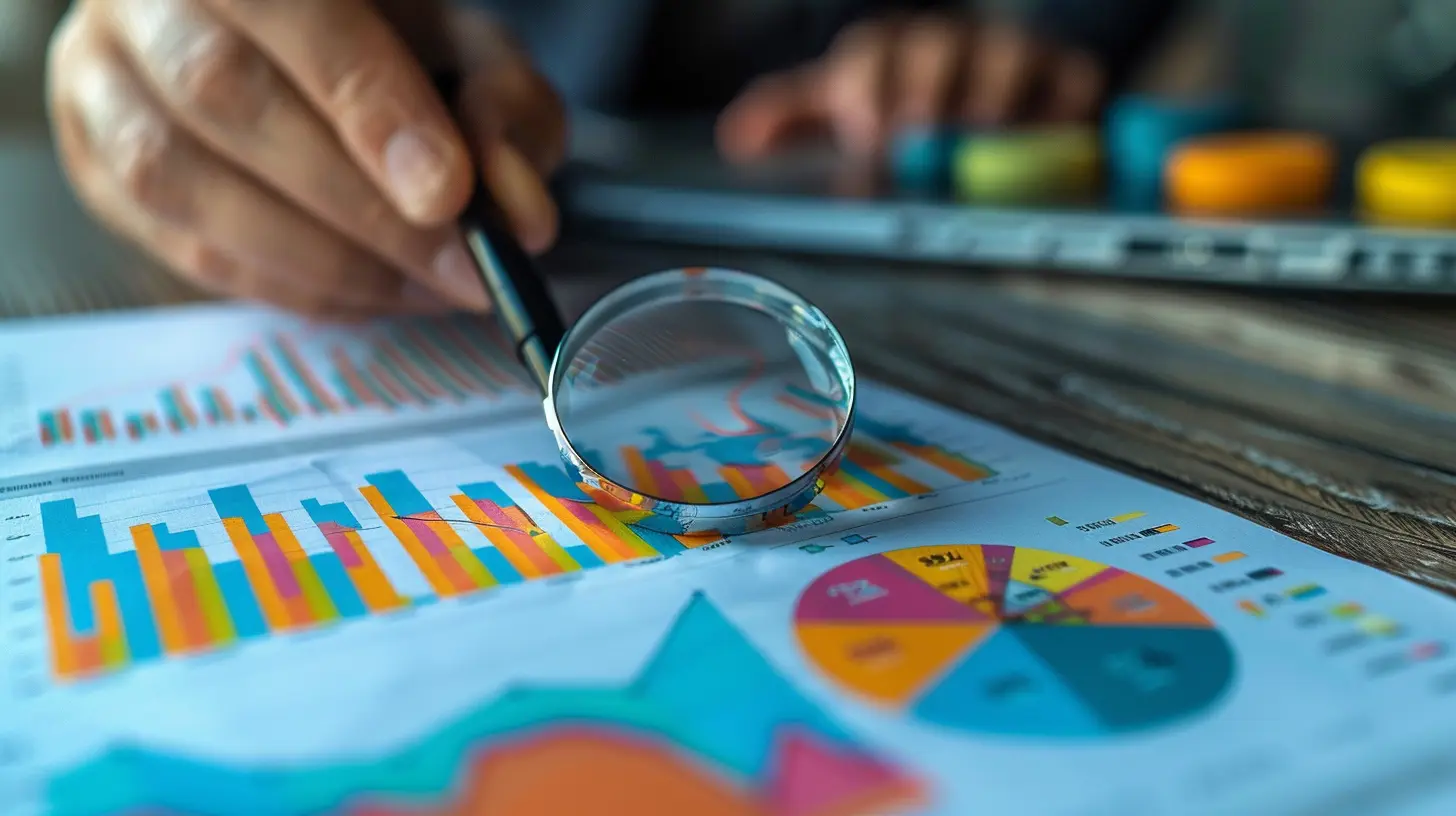Measuring Brand Equity Through Market Research
3 July 2025
Alright, let’s not kid ourselves—“brand equity” sounds like one of those yawn-inducing corporate buzzwords someone made up just to sound smart in a meeting. But here’s the tea: if you don’t know how to measure your brand equity, you’re out here throwing spaghetti at the wall and hoping it sticks.
Let’s break it down, sass and all. If your brand were a person, brand equity would be its reputation, charm, and that magnetic aura that makes people say, “Yep, I trust them.” And just like you wouldn't invest your cash in a stranger without doing some digging, you shouldn't pour your budget into branding without checking your brand's pulse.
So, how the heck do we do that? Market research, baby!

What the Heck Is Brand Equity, Anyway?
Let’s keep it simple. Brand equity is the value your brand holds in the minds of your customers. It’s the difference between someone buying your product and buying the exact same product from a no-name brand… just cheaper. It’s the glow-up that happens when people see your logo and feel something.When someone says "Nike," you don’t just think shoes—you think motivation, performance, and that urge to "Just Do It." That’s brand equity. It’s not just built on product quality (though that helps), it’s about perception, trust, emotional connection, and consumer experience.

Why Should You Even Care About It?
Well, unless you like wasting money, you should care. Brand equity:- Helps you stand out in a crowded market
- Lets you charge premium prices (hello, profit margins!)
- Increases customer loyalty (aka repeat business)
- Boosts your negotiation power with retailers and partners
- Makes it easier to expand your product line
Basically, it’s your business’s secret sauce.
But here’s the kicker: you can’t manage what you don’t measure. So, let’s get into the juicy stuff—how market research can help you measure your brand equity like a boss.

The Three Main Components of Brand Equity
Before we get into the how-to, you need to understand what you’re even measuring. Brand equity usually breaks down into three key components:1. Brand Awareness
Do people even know you exist? Awareness is the foundation. If your brand is so obscure it's practically in witness protection, you’ve got work to do.2. Brand Perception
What do people think about your brand? Are you seen as trustworthy, cheap, luxurious, or meh? Your brand’s personality lives here.3. Brand Loyalty
Would your customers defend you in a bar fight? (Figuratively, of course.) Loyalty is when customers stick with you even when cheaper or trendier options show up.Once you've got a handle on those three, it’s time to measure them like a pro.

Measuring Brand Equity Through Market Research
Now, here’s where things get spicy. Market research isn’t about sending a soulless survey into the void and hoping for clicks. It’s about asking the right questions, gathering real insights, and actually listening to the answers.1. Survey Says... Surveys Are Gold!
Yup, old-school surveys still rock. But you better make them work for you.Want to measure brand awareness? Ask questions like:
- Have you heard of our brand before?
- Where did you hear about us?
- Can you name any competitors?
Trying to gauge brand perception? Try:
- What words come to mind when you think of our brand?
- On a scale of 1-10, how trustworthy are we?
Loyalty? You already know:
- Would you recommend us to a friend?
- Would you repurchase from us?
Make your surveys spicy. Use fun formats, be brief, and always, always make your respondents feel heard (and maybe throw in a discount code, because hey, we all love a coupon).
2. Focus Groups: The Tea Party You Didn’t Know You Needed
Focus groups are intimate, real, and packed with emotion. Think of them as group therapy for your brand. Get a small group of your target audience, throw in snacks, and start asking open-ended questions.The chatter you hear can give you a goldmine of insight into:
- How customers really feel about your brand
- What pain points they associate with your industry
- What language they use to describe your product or service
That’s the stuff AI can’t make up. Real human vibes.
3. Social Listening: Because Everybody’s Talking
Social media isn’t just for memes and cat videos—it’s where people spill the beans. Use tools like Brandwatch, Hootsuite, or Sprout Social to monitor what’s being said about your brand.Look out for:
- Volume of mentions
- Sentiment (positive, neutral, negative)
- Common themes or complaints
- Influencer shoutouts or user-generated content
Social listening helps you stay in the know and jump on potential issues before they become PR nightmares.
4. Net Promoter Score (NPS): The Loyalty Litmus Test
This bad boy is simple yet powerful. Ask your customers one question:> "On a scale of 0 to 10, how likely are you to recommend us to a friend or colleague?"
Based on their answers, you categorize them into:
- Promoters (9-10) – your brand’s hype squad
- Passives (7-8) – meh, they’re just here
- Detractors (0-6) – yikes, they might drag you on Twitter
Track your NPS over time. If it starts dipping, it’s time to course correct.
5. Brand Equity Indexes: Go Full Nerd
If you're feeling extra, you can create your own Brand Equity Index. It’s a composite score based on metrics like:- Brand Awareness
- Perceived Quality
- Brand Associations
- Customer Loyalty
- Market Share
Assign weight to each based on its importance to your biz, and boom—you’ve got a custom score that tells you how strong (or weak) your brand is.
6. Track Purchase Behavior
Behavior speaks louder than surveys. Use tools like Google Analytics, CRM software, or POS systems to track:- Repeat purchases
- Cart abandonment rates
- Time spent on site
- Customer journey paths
This gives you the kind of data that doesn’t lie. People vote with their wallets.
7. Competitive Benchmarking: Know Your Place in the Pack
You’re not the only brand out there trying to win hearts and wallets. Use market research to see how you stack up against your competitors. Compare:- Awareness levels
- Sentiment analysis
- Loyalty scores
- Market share
Where do you shine? And where do you need a makeover?
Make It Make Sense: Turning Data Into Action
Okay, you’ve done your research. Now what?If your awareness is low, boost that visibility with ads, SEO, and influencer collabs.
If your perception is meh, invest in storytelling, branding, and customer experience.
If loyalty is weak, tighten up post-purchase support, loyalty programs, and email marketing.
Don’t just stare at your data like it’s hieroglyphics. Use it. Leverage it. Turn it into a battle plan that elevates your brand from "meh" to "must-have."
The Bottom Line: Brand Equity Isn’t Optional—It’s Everything
Measuring brand equity through market research isn’t a once-a-year task. It's a living, breathing strategy that evolves as your brand does. And while it might feel like herding cats sometimes, the reward is pure gold: loyal fans, higher profits, and a brand reputation that can weather any storm—even Twitter backlash.So stop guessing and start measuring. Your brand’s future—and your bottom line—depends on it.
all images in this post were generated using AI tools
Category:
Market ResearchAuthor:

Ian Stone
Discussion
rate this article
1 comments
Bethany Fisher
Insightful strategies for quantifying brand value.
July 27, 2025 at 1:05 PM

Ian Stone
Thank you! I'm glad you found the strategies insightful. Quantifying brand value is crucial for understanding equity and driving growth.


